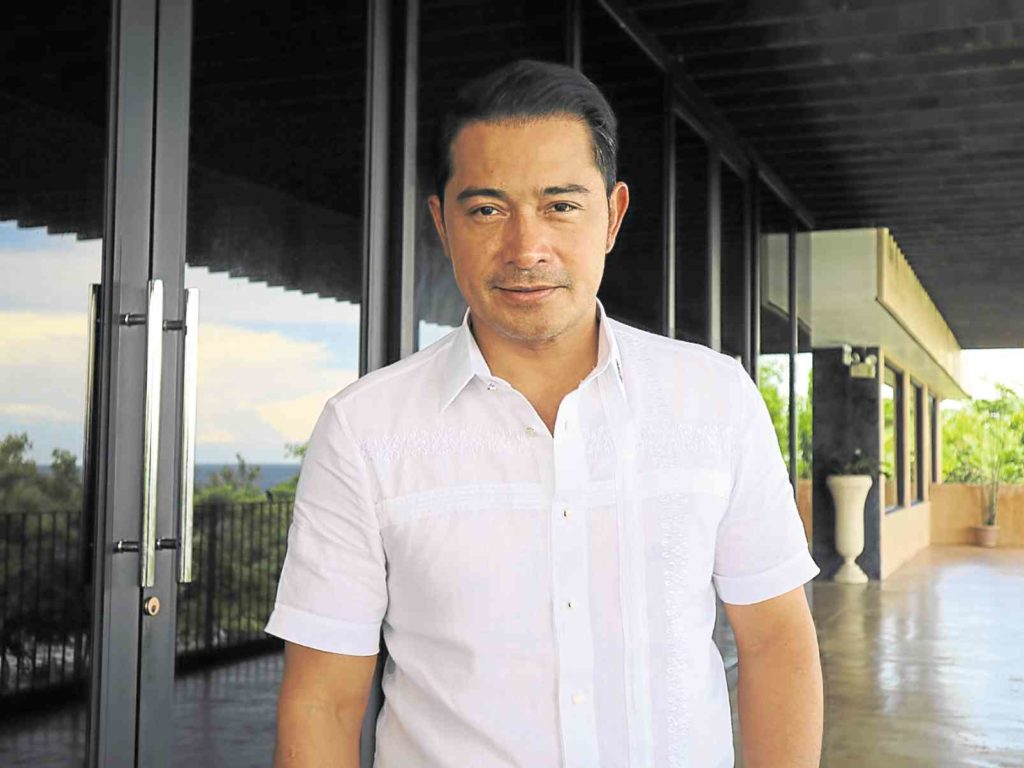Bohol pushes inclusive tourism growth agenda through art
Cesar Montano always had a dream to turn Bohol into a bustling hub for artists.
It’s been a decade since he came up with the vision of introducing art to the province’s Badjao community, but it’s only now that things seem to be falling into place for the vision of the actor-turned-chief operating officer of the Tourism Promotions Board (TPB).
Montano has set his sights on the coast of Dawis, where about a thousand Badjao families live among Bohol locals.
Decades ago, the indigenous group migrated to Bohol, among other regions of the country, due to the conflict in Mindanao.
This tribe of sea gypsies, who are heavily dependent on fishing to survive, has long resisted government attempts to relocate them.
But now, TBP sees teaching art as an opportunity to introduce a new means of livelihood to this community.
“It’s been a long time since I wanted this (project) to happen, back when tourism was on its rise in Bohol,” Montano says.
The hub is ultimately part of the latest inclusive campaign of the tourism department’s marketing arm called “Turismo Para sa Bayan,” where local residents directly gain from the benefits of tourism.
The campaign focuses on a community development marketing approach and Dawis is seen as the next key tourist destination.
The area is near Tagbiliran Airport and on the way to Panglao.
Even with the opening of Bohol’s international airport next year, the area will be along the roads taken going to must-visit sites like the Chocolate Hills and Loboc River.
Montano believes the artist’s hub is Dawis’ best option, and he wants the project done fast. “The construction doesn’t have to be that massive for now. By July, we will probably have something built,” he says.
He visualizes a simple but captivating design for the 100-square meter gallery to be built on the property of Armando Cavalinda, a born-and-raised Boholano and prosecutor who volunteered to lend his land to the project. The initial art workshops are targeted to take place in the last week of June.
Instead of capitalizing on the known skills of the Badjao, such as swimming, diving and dancing, Montano wishes to introduce art, beginning with paint as a medium. The art workshops will be spearheaded by Boholano painter Joey Labrador, who also suggests to create paint pigments from the region’s local soils and stones.
Montano insists the project will be “turning ‘beggars’ into businessmen,” as the Badjao are known to dive, even in the deep parts of the water, for the measly coins thrown by tourists in the ocean. Their future artworks are seen to be sold initially for $5-10 a piece and that’s just the beginning—before this village slum gets a complete makeover with graffiti murals on its cemented walls.
The blueprint of Montano’s vision comes from neighboring Indonesia, where the slum community of Kampung Pelangi village has been transformed into a tourist hub. The town, which was solely revamped with donations and corporate sponsorships, is now known as Rainbow Village. The hub also has its own version in Thailand where the area of the country’s street art festival took place.
With its current internet fame, these Southeast Asian destinations’ vividly colorful exteriors attract domestic and foreign tourists alike—and Montano hopes for the same result. Its success is seen as a much-needed boost to a community’s local economy, but it could also jumpstart urban planning for Bohol’s lesser known villages as well.
The planned art gallery and exhibit has the potential to transform into a cultural hub altogether—fusing the rich roots of Badjao traditional dancing and singing, in turn delivering a culturally engaging tourist experience.
“What is important is you introduce another window to them,” Montano says. “Painting is a universal language—they may be illustrating different things, and their favorite colors will be different from most, but it is universal,” he adds.
The TPB COO’s eyed project is completely passion-driven, with Montano being a painter himself. However, even without the aid of marketing and cultural research yet, the initiative, if successful, is capable of tapping Bohol’s local industries with the resources it needs—mining, wood, agriculture, services—in the long run.
And that all begins with introducing art to a community that couldn’t access it otherwise. —CONTRIBUTED

